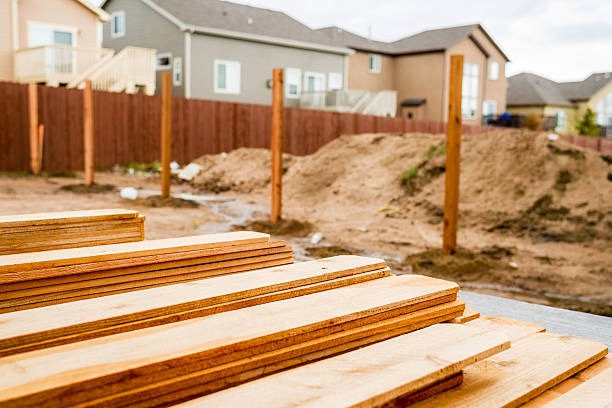
How to Avoid Project Delays When Working with Fence Contractors
Starting a fencing project for your home or business can be thrilling. Whether it’s about enhancing privacy, adding curb appeal, or boosting security, a new fence delivers measurable benefits. However, if you’ve ever experienced project delays, you know just how quickly excitement can turn into frustration. The good news? There are proven strategies to keep your fence project on track. This article breaks down these strategies, equipping you with all the knowledge you need to ensure your project runs smoothly from conception to completion.
Know Your Needs Before You Call the Pros
Get Specific About Your Vision
Before you even pick up the phone to call a fence contractor, take some time to consider your goals. Do you want a fence for privacy, security, pet containment, or pure aesthetics? Figure out the materials you prefer—wood, vinyl, metal, or something else entirely. Sketch where you want the fence, measure your property and note any obstacles like trees, slopes, or utility lines.
Create a Checklist
-
Decide on the purpose of your fence
-
Measure the perimeter you want to enclose
-
Check for property lines and any easements
-
Pick your preferred materials and styles
-
Write down your budget range
This prep phase saves time by helping you communicate needs clearly to your contractor, making quoting and planning much more precise.
Research Your Fence Contractors Thoroughly
Don’t Just Trust the First Option
No two fencing contractors are alike. Ask for recommendations from friends, check review sites, and scroll through online galleries of previous projects. Get a sense of each contractor’s reputation, timeliness, and materials expertise.
Questions to Ask Before Signing the Contract
-
What’s your experience with the specific type of fence I want?
-
Do you have a portfolio of completed jobs?
-
Can you provide local references?
-
What is the estimated project timeline?
-
How do you handle permitting and utility location?
A little research goes a long way toward avoiding misunderstandings and delays down the line.
Get All the Details in Writing
When working with professionals, verbal agreements just aren’t enough. Make sure you get a written contract that outlines every detail—scope of work, material choices, start and finish dates, payment schedule, and warranty information. If any special requirements for your property or rules must be followed, those should be included, too.
Double-Check These Key Contract Clauses
-
A clear description of the job and materials
-
Exact timelines (with room for weather or other unavoidable delays)
-
Details on permits or HOA approvals
-
Payment breakdowns (deposits, milestones, completion)
-
Who handles the cleanup and disposal of old fencing
Don’t hesitate to ask for clarification or request changes. A well-written contract protects you against many common causes of project delays.
Understand the Permitting Process
In many areas, you’ll need a permit for a new fence—especially if it’s a certain height, close to a street, or part of a commercial property. Investigating permitting regulations early can prevent long holdups.
Steps to Fast-Track Permitting:
-
Contact your local municipal building or zoning department
-
Ask about fence regulations in your neighborhood
-
Gather all required documents (property surveys, designs, etc.)
-
Submit your application promptly
-
Follow up regularly until approval is confirmed
The more you know (and the earlier you start), the less likely your project is to stall waiting for paperwork.
Prepare Your Site Ahead of Time
Give Your Contractors a Head Start
Before installation day, clear the work area of clutter, outdoor furniture, and personal belongings. If there are plants or landscaping features you want to protect, flag them clearly. Make sure pets and children won’t be underfoot.
Site Prep Checklist
-
Remove any items along the fence line
-
Trim grass and shrubs near where the fence will go
-
Flag sprinkler heads and underground utilities
-
Arrange access to gates or driveways, if needed
Taking these steps streamlines the work for your contractor and keeps the project moving toward completion.
Maintain Open Communication Throughout
Make Yourself Available
Once work begins, stay in regular contact with your contractor. Check in at the end of each day (or as agreed) to review progress, address surprises, and keep an open line for questions. This is especially important if you’re not living at the project site.
Tips for Productive Conversation
-
Set a preferred communication method (text, email, phone)
-
Discuss any changes or concerns promptly
-
Ask for daily or weekly progress updates
-
Be available for quick decisions that could keep things on schedule
Fast feedback prevents confusion and stops small issues from snowballing into significant delays.
Plan for Weather and Supply Delays
Mother Nature can be unpredictable, and so can the global supply chain. Even with the best planning, weather events and material shortages sometimes throw plans off course. The trick is to anticipate what can go wrong so you’re not caught off guard.
Smart Steps for Staying Flexible
-
Schedule your project outside of rainy or storm seasons if possible
-
Ask your contractor about current supply chain issues before you start
-
Have backup material choices if your first pick is unavailable
-
Accept that slight schedule adjustments are sometimes necessary
A realistic mindset reduces frustration and helps everyone adjust to obstacles gracefully.
Be Decisive and Avoid Scope Creep
Stick to Your Plans
“Scope creep” happens when homeowners keep changing their minds about new layouts, extra gates, or upgraded materials. While flexibility is great, endless changes make it impossible for contractors to stick to a timeline. Try to finalize your wishes before the work begins.
How to Keep the Project on Track:
-
Finalize plans before work starts
-
Avoid making major design changes mid-project
-
Request written change orders for any alterations
-
Know that each change can add days (or weeks) to your finish date
Being decisive helps your contractor dedicate focus and resources, resulting in a much faster, smoother completion.
Monitor Progress and Keep Records
It’s perfectly okay to monitor the job as it moves forward. Take photos of each stage and keep a written log of milestones, deliveries, and any issues. If anything seems behind, ask about it early instead of waiting until frustration boils over.
Advantages of Staying Involved
-
Catch mistakes or misunderstandings early
-
Have a record in case of disputes or warranty needs
-
Feel more confident about the quality and timeline of the project
While trust is important, staying engaged ensures your expectations are met.
Consider Material and Contractor Availability
Sometimes, choosing in-demand materials or highly booked contractors means facing longer waits upfront. If speed is crucial, talk candidly about availability. For example, fences made of materials such as those used by PR Fence Company aluminum fences may occasionally need to be ordered well ahead of time due to their popularity and durability. Ask your contractor if there are alternatives that can be sourced faster or if pre-booking installation will keep you on schedule.
Tips for Faster Delivery and Scheduling
-
Be flexible on material choices if timelines are tight
-
Pre-order materials once your contract is signed
-
Reserve your spot on the contractor’s calendar well in advance
-
Ask about partial deliveries if some materials are delayed
Staying informed regarding materials and availability can help you sidestep unnecessary waiting periods.
Don’t Overlook the Basics for Faster Results
One major advantage of some fencing systems is speed—for instance, chain link fencing can often be installed much faster than more custom solutions, thanks to pre-fabricated sections and simpler installation techniques. However, not all properties or purposes are suited for chain links, so the function should be balanced with the desired look and timeline. When in doubt, discuss the installation process and options with your contractor to find the best solution for your unique situation.
Local Knowledge Is Golden
Working with professionals who know your area has big perks. Fence contractors in Reading are more likely to be familiar with local codes, permitting deadlines, and even quirks of your neighborhood’s terrain or soil. That means fewer surprises during the process, helps navigate red tape, and results in a smoother project all around. Partnering with a contractor who understands your region’s unique challenges can shave days or even weeks off your timeline.
Final Thoughts
Delays don’t have to be part of your fencing project. Most issues come down to clear planning, good communication, decisive choices, and the right contractor. When you’re proactive, collaborative, and realistic, you’ll find that even larger or more complicated fence installations can run on time and with less stress. The result? You’ll enjoy your new fence sooner than you thought possible—without all the headaches. Here’s to your next successful fencing project!


